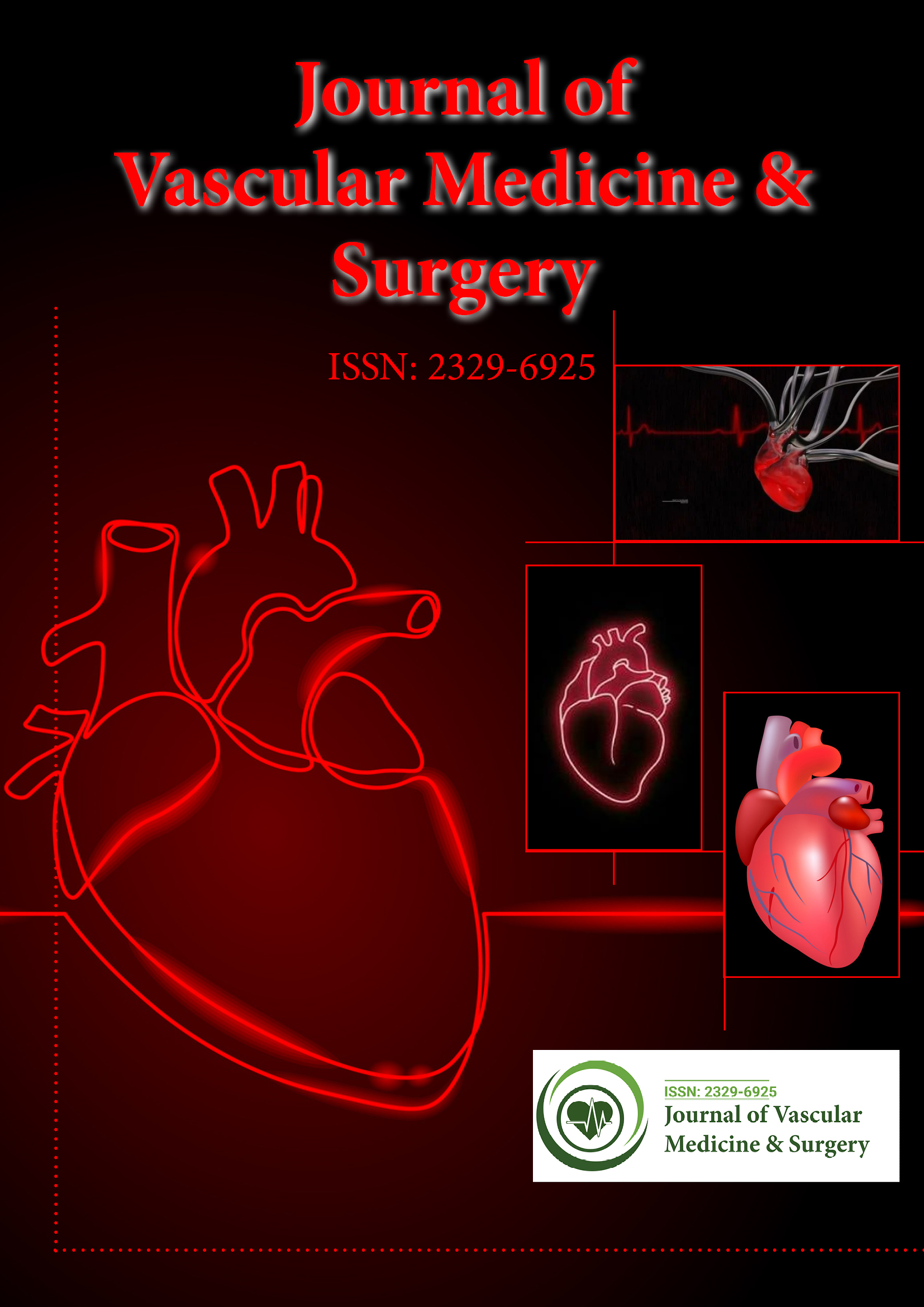Indexed In
- Open J Gate
- Academic Keys
- RefSeek
- Hamdard University
- EBSCO A-Z
- OCLC- WorldCat
- Publons
- Euro Pub
- Google Scholar
- SHERPA ROMEO
Useful Links
Share This Page
Journal Flyer

Open Access Journals
- Agri and Aquaculture
- Biochemistry
- Bioinformatics & Systems Biology
- Business & Management
- Chemistry
- Clinical Sciences
- Engineering
- Food & Nutrition
- General Science
- Genetics & Molecular Biology
- Immunology & Microbiology
- Medical Sciences
- Neuroscience & Psychology
- Nursing & Health Care
- Pharmaceutical Sciences
Opinion Article - (2022) Volume 0, Issue 0
Mechanism of Atherosclerosis and its Symptoms
Ghaidaa Altoum*Received: 22-Nov-2022, Manuscript No. JVMS-22-19499; Editor assigned: 24-Nov-2022, Pre QC No. JVMS-22-19499 (PQ); Reviewed: 09-Dec-2022, QC No. JVMS-22-19499; Revised: 16-Dec-2022, Manuscript No. JVMS-22-19499 (R); Published: 19-Dec-2022, DOI: 10.35248/2329-6925.22.S13.494
Description
The thickening, heat treatments, and loss of flexibility of artery walls are established as arteriosclerosis. This method effectively reduces blood flow to organs and tissues and can cause serious health issues caused by atherosclerosis; it is a type of arteriosclerosis that results from the accumulation of plaque in the arteries, cholesterol, and other substances around the artery walls. It can be caused by smoking, a poor diet, or a wide range of genetic and environmental factors.
Atherosclerosis is the main cause of Coronary Artery Disease (CAD) and cerebrovascular disease, with genetic and environmental factors playing a major role. A wide range of genetic and nongenetic risk factors for coronary artery disease has been recognized in genetic-epidemiologic analysis. These analysis shows that family history is the most significant individual risk factor. Atherosclerosis is a form of cardiovascular disease.
Symptoms of Atherosclerosis
Atherosclerosis generally affects older adults, but it can proceed in adolescence. Inside the artery, white blood cell stains will appear on the arterial walls. Frequently there are no symptoms before a component of plaque fractures or blood flow becomes controlled. It can be a brief procedure. Atherosclerosis symptoms vary depending on which arteries are affected.
The carotid artery supplies blood to the brain. A stroke can occur when blood supply is controlled. Stroke symptoms can occur suddenly which includes: difficulty breathing, migraine, damage to the nerves, and if a person exhibits symptoms of a stroke, they should obtain immediate medical attention.
Coronary arteries
The coronary arteries provide blood to the heart. Angina and heart attacks can occur when the blood supply to the heart is affected. A person can experience: Chest pain and swelling, vomiting, chronic anxiety, breathing, and etiology.
Renal arteries
The organs are provided with blood through the renal arteries. Chronic organ disease can develop if the blood supply is affected. A person with significantly required renal artery blood clot to cause chronic kidney disease can experience: Appetite loss, hand and lower leg swelling, and having difficulty in concentrating.
Peripheral arteries
These arteries supply blood to the arms, upper limbs, and pelvic region. A person's limb can be painful if blood cannot circulate effectively. Muscle death and blood poisoning can occur in severe cases. A stroke or heart attack is also increased by peripheral artery disease.
Complications of Atherosclerosis
The complications of atherosclerosis are determined by the artery walls that are reduced or prevented. For example:
Coronary artery disease
When atherosclerosis reduces the arteries near the heart, it can contribute to coronary artery disease, which can cause chest pain (angina), a heart attack, or heart failure.
Carotid artery disease
Peripheral arterial disease can occur when atherosclerosis reduces the arteries near the brain. A Transient Ischemic Attack (TIA) or stroke can result from the carotid artery disease.
Peripheral artery disease
When atherosclerosis reduces the arteries in the upper limbs, individuals can also develop peripheral artery disease, which causes blood flow difficulties in the thighs and legs. This can make the less sensitive to heat and cold, increasing the risk of being negatively affected or hypothermic. A loss of blood flow to the arms and legs can cause tissue death in rare instances (gangrene).
Aneurysms
Aneurysms is a serious complication that can occur in any part of the body, it can also be caused by atherosclerosis. The majority of people with aneurysms have no illnesses. Aneurysms can cause pain and throbbing, which is a medical emergency. If an aneurysm fractures, it can cause life-threatening organ damage.
Chronic kidney disease
Atherosclerosis can cause the arteries to reduce the organs. This reduction prevents sufficient air blood to reach the internal organs. The internal organs require sufficient blood flow to help filter waste products and remove excess fluids.
Citation: Altoum G (2022) Mechanism of Atherosclerosis and its Symptoms. J Vasc Surg. S13:494.
Copyright: © 2022 Altoum G. This is an open access article distributed under the terms of the Creative Commons Attribution License, which permits unrestricted use, distribution, and reproduction in any medium, provided the original author and source are credited.

